
January 2023
Saltwater Circuit Activity
How conductive is saltwater compared to freshwater, if at all? In this activity, students investigate the conductivity of saltwater and develop an understanding of how the amount of salt in a solution impacts how much electrical current flows through the circuit. They learn about one real-world application of a saltwater circuit — as a desalination plant tool to test for the removal of salt from ocean water.

December 2022
Creating Model Working Lungs: Just Breathe Activity
Breathe in... breathe out... ahhh! In this activity, students explore the inhalation/exhalation process that occurs in the lungs during respiration. Using everyday materials, each student team designs a lung model.

November 2022
To Pollinate or Not to Pollinate Activity
By studying how bees and flowers interact with one another, we can also understand engineering practices related to our environment! In this activity, students engineer a model of a flower to test different materials’ ability to pollinate another flower.

October 2022
Paper Circuits Greeting Cards Activity
Create a sure-to-impress flashing birthday card or design a light-up holiday card—all with paper circuits! In this activity, students are guided through the process to create simple paper circuitry using only copper tape, a coin cell battery, a light-emitting diode (LED) and small electronic components such as a LilyPad Button Board.

September 2022
Edible Rovers Activity
Design a Mars exploratory rover, with a tasty twist! In this activity, students evaluate rover equipment options and determine what edible parts fit in a NASA budget that the teacher provides. With a parts list, teams use these constraints to design for their rover. The students build and display their edible rover at a concluding design review.
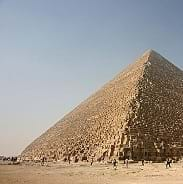
August 2022
Stack It Up! Activity
Learn how to design an amazing engineering marvel from the ancient world: the pyramid! In this activity, students work in engineering teams to perform calculations to determine the area of the pyramid base, stone block volumes, and the number of blocks required for their pyramid base. Students also make a scaled drawing of the pyramid using graph paper.

July 2022
Make Your Own Temperature Scale Activity
What's the difference between temperature and thermal energy? Have your students explore these concept as they use the engineering design process to create thermometers using simple materials and to develop their own scales for measuring temperature. They compare their thermometers to a commercial thermometer, and get a sense for why engineers need to understand the properties of thermal energy.

June 2022
Keep Your Cool! Design Your Own Cooler Challenge Maker Challenge
Keep cool this summer with a student-driven cooler design! In this activity, students work through the engineering design process and brainstorm a design of their cooler and its attributes. They then choose from the materials provided to create a prototype. Students have the opportunity to test their prototype by measuring the room temperature, the starting temperature of the water and graphing, and monitoring the change in temperature over increments time in comparison to the room temperature water.
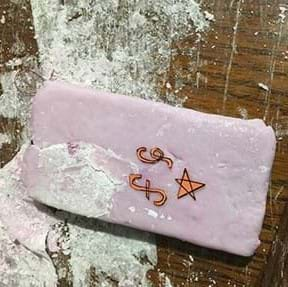
May 2022
Design Your Own Nano-Polymer Smartphone Case Maker Challenge
Students work through the engineering design process to design and create their own nano-polymer smartphone or tablet case. Students choose their design, mix their nano-polymer (based in silicone) with starch and add coloring of their choice. While thinking critically about their design, students embed strings in the nano-polymer to optimize both case strength and flexibility.

April 2022
Protect Your Body, Filter Your Water! Activity
Make sense of the problem of drinking water contamination. In this activity, students explore how substances such as prescription medication, pesticides and hormones are found in municipal drinking water sources. Using chlorine as a proxy for pharmaceuticals found in water, student groups design and test prototype devices that remove the contamination as efficiently and effectively as possible.

March 2022
Sink or Float? Engineering Solutions for a Sticky Situation Activity
Why do some objects float while others sink? Students make sense of this phenomenon by engaging in the science and engineering practices of asking questions and defining problems, using models, and designing solutions. Students then apply what they discover to solve everyday situations, such as preventing a car from sinking.

February 2022
Element, Mixture, Compound Activity
Element, mixture, or compound? In this classic activity, students gain a better understanding of the different types of materials engineers use, such as pure substances and mixtures. They also learn to distinguish between homogeneous and heterogeneous mixtures by discussing an assortment of example materials they use and encounter in their daily lives.
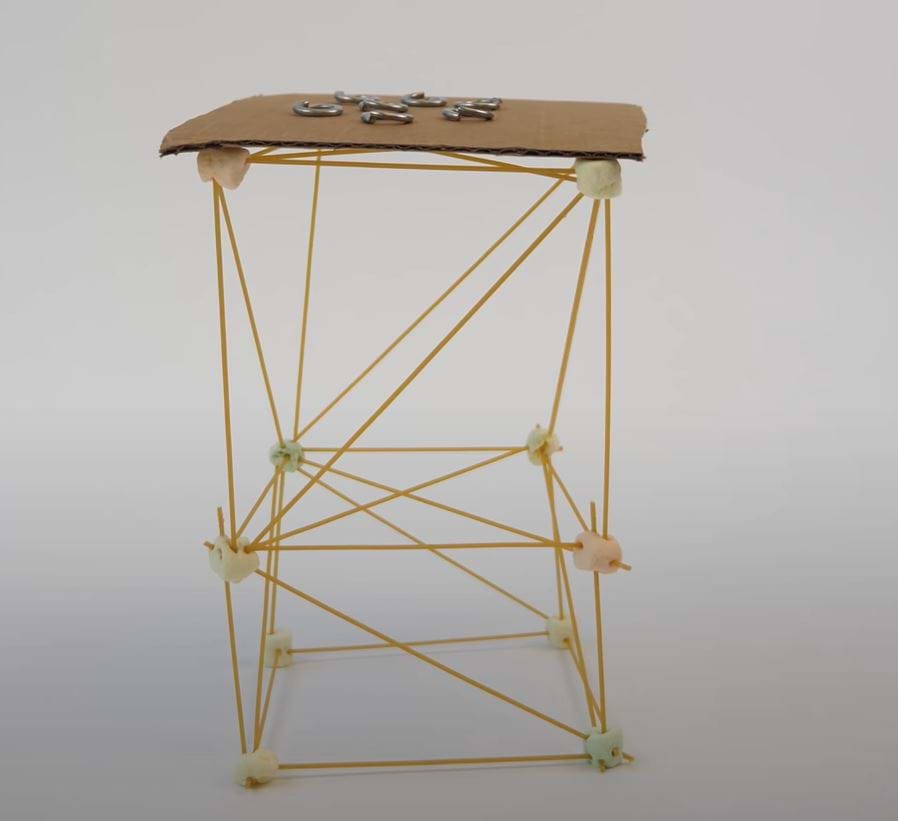
January 2022
Leaning Tower of Pasta Activity
A classic TeachEngineering activity! Using spaghetti and marshmallows, students experiment with different structures to determine which ones are able to handle the greatest amount of load. Their experiments help them to further understand the effects that compression and tension forces have with respect to the strength of structures

December 2021
Creating an Electromagnet Activity
What are the properties of electromagnets? In this activity, students create their own small electromagnets and experiment with ways to change their strength to pick up paper clips. Learn about ways that engineers use electromagnets in everyday applications!

November 2021
Design a Better Bandage Maker Challenge
What might make a bandage better? In this challenge, students follow the engineering design process and use water-absorbing crystals to create a bandage that may be used in a traumatic situation, like a car accident or hiking accident. Students first observe how water-absorbing crystals work and then consider how their function could be applied in a medical setting

October 2021
Mathematically Designing a Frictional Roller Coaster Activity
What can roller coasters teach us about math and physics? In this activity, students apply high school-level differential calculus and physics to the design of two-dimensional roller coasters while considering frictional forces. In a challenge the mirrors real-world engineering, the roller coaster must be made from at least five differentiable functions. Teams build and test small-sized prototype models of the exact designs using foam pipe wrap insulation as the roller coaster track channel and using marbles as the ride "carts."
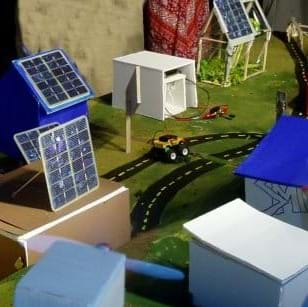
September 2021
Design a Solar City Activity
In a time when creating clean energy is essential to the future health of our planet, engineers are looking for every way possible to produce carbon-free power. In this activity, students design and build a model city powered by the sun! They learn about the benefits of solar power, and how architectural and building engineers integrate photovoltaic panels into the design of buildings.

August 2021
Operation Build a Bridge and Get Over It Activity
Taking on the role of structural engineers. students learn about forces and load distributions as they follow the steps of the engineering design process to design and build small-scale bridges using wooden tongue depressors and glue. Teams brainstorm ideas that meet the size and material design constraints and create prototype bridges of the most promising solutions. They test their bridges to see how much weight they can hold until they break and then determine which have the highest strength-to-weight ratios.

July 2021
Create a Safe Bungee Cord for Washy! Activity
What can bungee cords teach us about engineering? Have your students learn about the role engineers might play in developing the perfect bungee cord length by simulating and experimenting with bungee jumping using washers and rubber bands. Students work as if they are engineers for an amusement park in order to develop a show-stopping (and safe) bungee jumping ride!

June 2021
Simple Machines and the Rube Goldberg Challenge Maker Challenge
In this challenge, students research simple mechanisms as they learn to make Rube Goldberg machines! Working in teams, students use the engineering design process to design and build their own Rube Goldberg devices with 10 separate steps—and they must incorporate the six classic simple machines.

May 2021
Charge It! All About Electrical Attraction and Repulsion Activity
Engage in the engineering practice of asking questions and use balloons to perform simple experiments to make sense of the phenomena of static electricity and charge polarization! Students attract and repel objects with their charged balloons, and explore the disciplinary core idea of electronic and magnetic forces and the crosscutting concept of cause and effect.

April 2021
Model Greenhouses Activity
Teach about the advantages and disadvantages of the greenhouse effect! In this hands-on activity, students construct their own miniature greenhouses and explore how their designs take advantage of heat transfer processes to create controlled environments. They record and graph measurements, comparing the greenhouse indoor and outdoor temperatures over time. Students also consider global issues such as greenhouse gas emissions and their relationship to global warming.
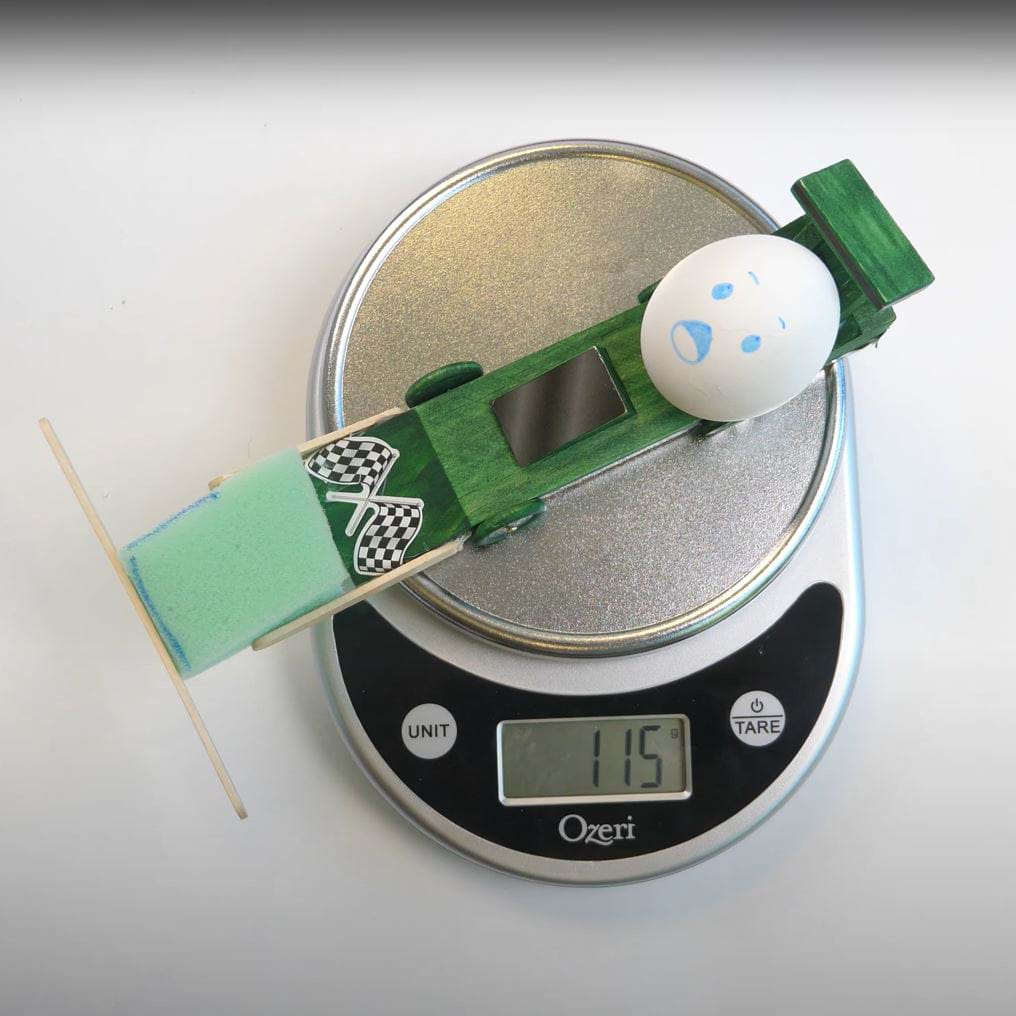
March 2021
Creative Crash Test Cars Maker Challenge
How does mass affect momentum in a head-on collision? Challenge your students to design or improve an existing passenger compartment design/feature so that it better withstands front-end collisions, protecting riders from injury and resulting in minimal vehicle structural damage. With a raw egg as the test passenger, teams use teacher-provided building materials to add their own safety features onto either a small-size wooden car kit or their own model cars created from scratch.

February 2021
Testing Model Structures: Jell-O Earthquake in the Classroom Activity
Make sense of the design challenges engineers face that arise from earthquakes and related tectonic phenomena! In this activity, students work to design and construct buildings to withstand earthquake damage by applying elements of the engineering design process by building their own model structures using toothpicks and marshmallows.

January 2021
Creating Mini Wastewater Treatment Plants Activity
Engage in the engineering design process to simulate a wastewater treatment plant! Drawing from assorted materials such as gravel, pebbles, sand, activated charcoal and others, students create filter systems inside 2-liter plastic bottles to clean wastewater made of soap, oil, sand or coffee grounds. Students aim to remove the water contaminants while reclaiming the valuable water resource.

December 2020
A Shot Under Pressure Activity
Explore the world of projectile physics and fluid dynamics and have students calculate the water pressure in water guns! By measuring the range of the water jets, students can calculate theoretical pressure. Students create graphs to analyze how the predicted pressure relates to the number of times they pump the water gun before shooting.
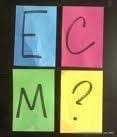
November 2020
Element, Mixture, Compound Activity
How can we distinguish between compounds, elements, and mixtures? Gain a better understanding of the different types of materials as pure substances and mixtures and have students identify the differences between homogeneous and heterogeneous mixtures. In this activity, students discuss an assortment of example materials they use and encounter in their daily lives.

October 2020
Make a Sticky-Note Fan with Arduino Maker Challenge
All sorts of real-world devices—ranging from toys to large industrial tools—use electric motors. In this maker project, students design their own systems using little motors and learn how to control them using Arduino microcontrollers. Learning how to use microcontrollers correctly to control motors is the first step to using motors in all types of projects!
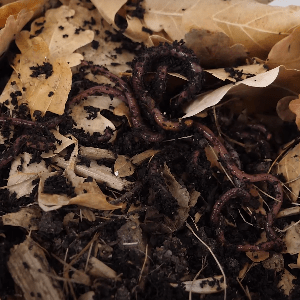
September 2020
Soil from Spoiled: Engineering a Compost Habitat for Worms Activity
A unique activity for young learners that combines engineering and biology, students design an optimal environment for red wiggler worms in a compost bin using the engineering design process. Students learn about living and non-living things, the habitat of red wigglers, how red wigglers help convert organic waste into soil, as well as composting in nature and as a sustainable practice.
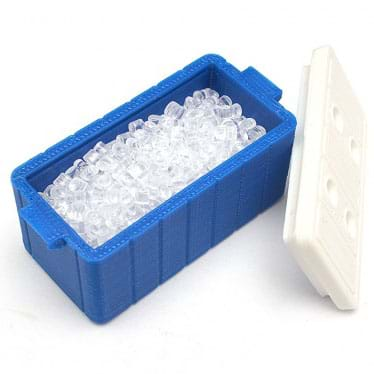
August 2020
Keep Your Cool! Design Your Own Cooler Challenge Maker Challenge
Engage students in this refreshing summer project that focuses on design thinking! In this challenge, students prototype an ice cooler and monitor the effectiveness of its ability to keep a bottle of ice water cold in comparison to a bottle of ice water left at room temperature. Along with engaging in the engineering design process, students assess the effectiveness of their cooler by measuring the room temperature, the starting temperature of the water and graphing and monitoring the change in temperature over time.

July 2020
Prodigious Printing Possibilities Activity
3D printing (or additive manufacturing) is transforming the way engineers design, prototype, and build. Engage your students with this unique introduction to the mechanics of 3D printing as they transform into engineers and they work in teams to carry out a 3D printing task. Their mission: "print" using a blunt-tip needle syringe and a variety of colored liquid materials (shampoo, conditioner, aloe, and hand sanitizer) into a small plastic box filled with a gel base.

June 2020
Toxic Island: Designing Devices to Deliver Goods Maker Challenge
A classic engineering challenge involves designing and building devices that can deliver necessary goods to “Toxic Island,” an island that has been quarantined by the World Health Organization due to a nasty outbreak of disease. In this maker challenge, students design a device that must not touch the water or the island, and must deliver supplies accurately... and quickly!

May 2020
Insulation Materials Investigation Activity
Engineers design thermal insulation for countless products and purposes, including pipe installations, shipping and handling for food and beverages, space travel, and even our clothing! In this activity, students learn about the role that thermal insulation materials can play in reducing heat transfer by conduction, convection and radiation, as well as the design and implementation of insulating materials in construction and engineering.
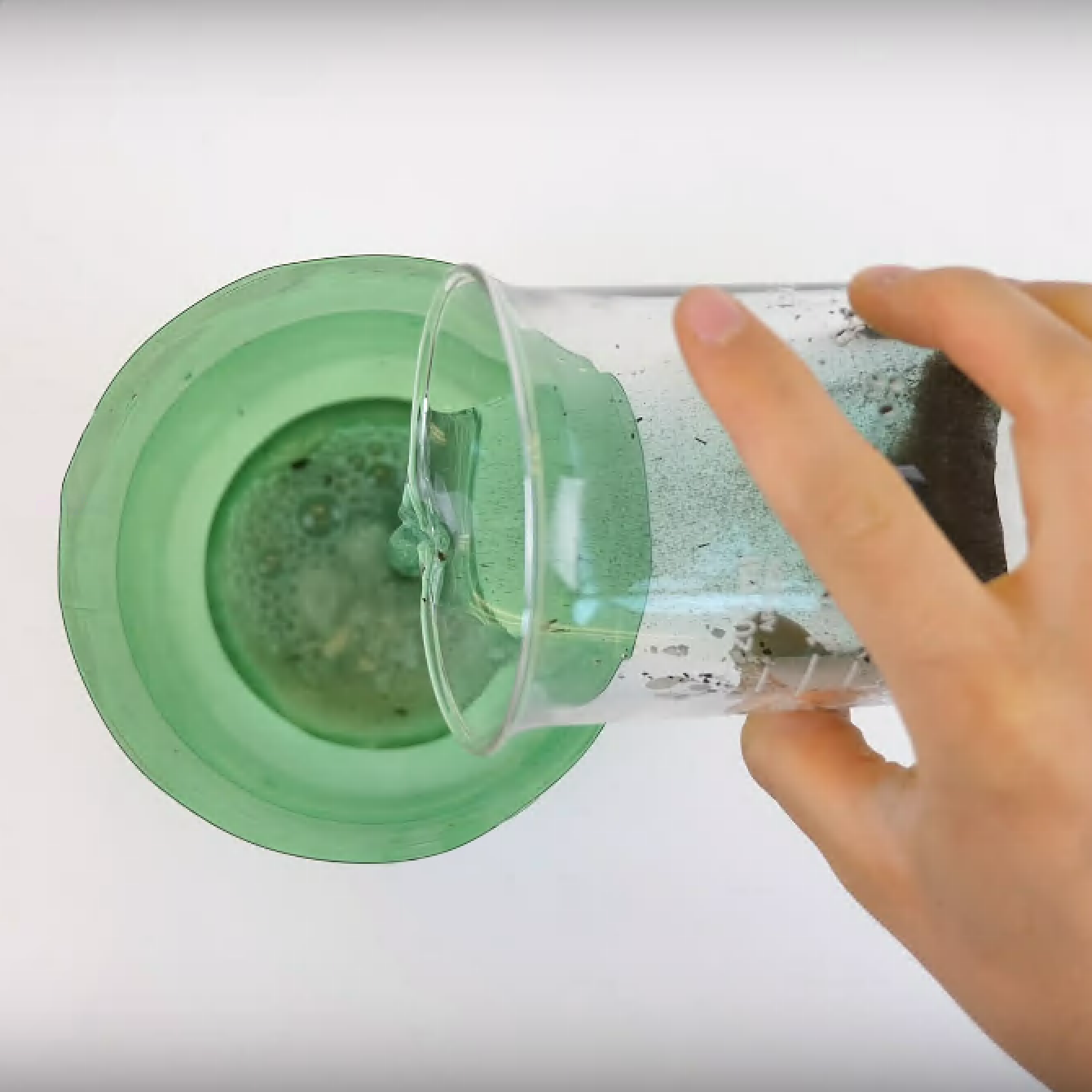
April 2020
The Dirty Water Project: Design-Build-Test Your Own Water Filters Activity
Create and test a water filter at home! This hands-on activity allows students to investigate different methods for removing pollutants from water, including aeration and filtration. Have your students design, build, and test their own filter prototypes by conducting their own "dirty water projects."

March 2020
Out-of-the Box: A Furniture Design + Engineering Challenge Maker Challenge
Engage students in a unique approach to engineering and aesthetics with cardboard furniture designs! Challenge students to design and build architecturally inspired cardboard furniture, cultivate their industrial engineering and design skills, and allow them to explore how to meet functional, aesthetic and financial requirements of a given plan. Let form follow function!
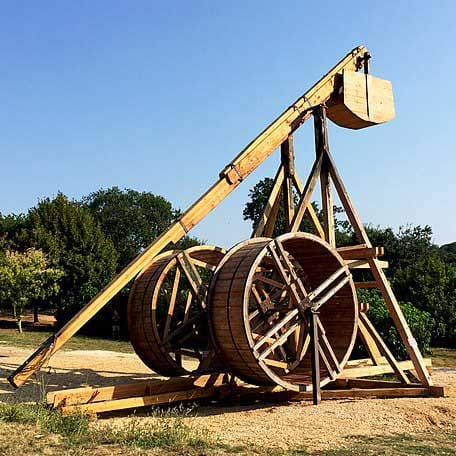
February 2020
Trebuchet Design & Build Challenge Activity
Ready, set, launch! Students explore a classic engineering design used during the Middle Ages to launch projectiles over or through castle walls as well as study modern day examples used in events such as the "Punkin’ Chunkin’." Students work in teams research how to design and build their own trebuchets from scratch while following a select number of constraints. They test their trebuchets, evaluate their results through several quantitative analyses, and present their results and design process to their classmates.
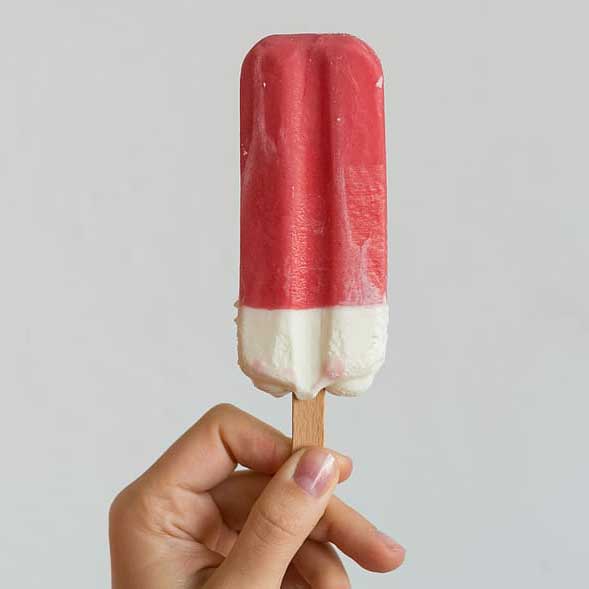
January 2020
Be “Cool” with Popsicle Engineering Activity
Engage young learners in a tasty activity to help them understand the basic steps of the engineering design process! Students are introduced to what engineers do in their daily lives through several books on engineering and then role play as engineers to produce a set of purple popsicles. They follow the steps of the design process and learn how engineers solve problems through products that make the world a better and more efficient place.

December 2019
Visualize Your Heartbeat Maker Challenge
Challenge students to become biomedical engineers who design, create, and test a medical device! This project allows students to explore basic coding, utilize the capabilities of microcontrollers, and understand how sensors gather data about the human body so they can dive into the expanding world of wearable tech. This is a great project for a high school senior design team!

November 2019
The Benefits of Inclined Planes: Heave Ho! Activity
Engage students' understanding of a classic simple machine: the inclined plane! A great activity for young learners, students use a spring scale, a bag of rocks, and an inclined plane to explore how dragging objects up a slope is easier than lifting them straight up into the air. Students are also introduced to the scientific method and basic principles of experimentation. Engineers continually look for new tools to make life easier, and the inclined plane is certainly one of them!
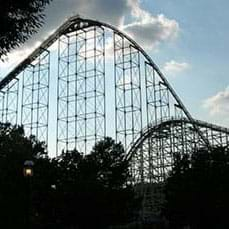
October 2019
Mathematically Designing a Frictional Roller Coaster Activity
With their breathtaking elevation changes and thrilling speeds, roller coasters rides are the star attractions of amusement parks—and engineering plays a huge role in their design! All the various loops, curves, and dips work because of gravity, inertia, and friction. Guide students through the engineering design process as they build a simple roller coaster, all while considering the same forces that professional engineers do when designing rides.

September 2019
Creative Crash Test Cars Maker Challenge
How does mass affect momentum in a head-on collision? Using a raw egg as a "crash test dummy" students take on the challenge of designing safety features for wooden car kits. By running the prototypes down ramps into walls, collecting distance and time data, and videotaping of their crash, students make calculations and look for relationships between car mass, speed, momentum and the amount of crash damage sustained by their vehicles.

August 2019
Creating an Electromagnet Activity
We may not even realize that we interact with electromagnets on a daily basis, but engineers use them in a wide range of designs including refrigerators, vacuum cleaners, doorbells, and even clocks. When it comes to using electromagnets, the possibilities are endless! This activity is an attractive way to engage students in building and testing the properties of several electromagnetic designs right in the classroom.
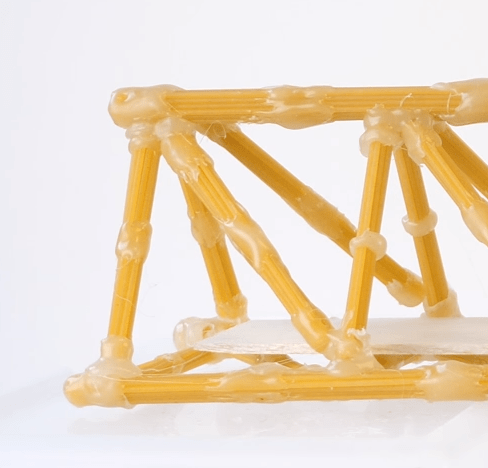
July 2019
Spaghetti Bridges Activity
Explore the world of civil engineering and become a bridge designer using a favorite food: spaghetti! In this activity, students play the role of civil engineers by making bridges out of spaghetti, and then test their designs by applying weight in order to see when they break. Allow your students to create designs using a variety of different pastas and see which bridges can last the longest under stress!
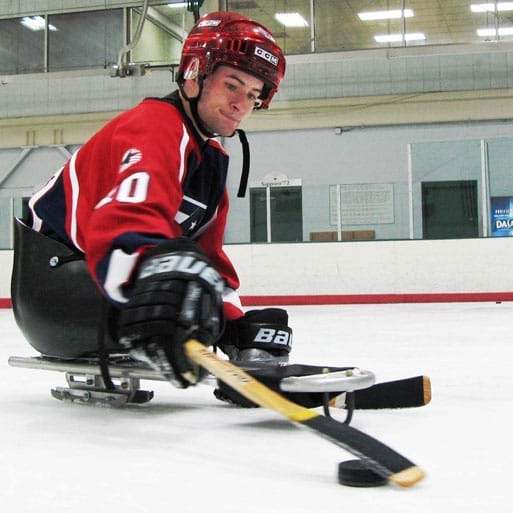
June 2019
Sled Hockey Design Challenge Activity
Engineering helps democratize sports by introducing designs that allow individuals with physical disabilities to compete. Explore the engineering behind one such innovation used in sled hockey: the sled hockey stick! By applying geometric methods to solve design problems as well as through tension and flexure testing, students build hockey sticks that can face-off against the rigors of game play on the ice. Shoot for the goal in this unique engineering challenge!

May 2019
Cool Puppy! A Doghouse Design Project Maker Challenge
Design a doghouse to keep our furry friends safe during the summer! Students use the engineering design process to build and test doghouses that will shelter a "puppy" from heat and light sources. This maker challenge lets students build a number of doghouse designs while considering material, size, and cost constraints. Later, students test them by taking thermometer readings under hot lamps and then think of ways to improve their designs—a great project for learning about energy transfer, absorption, insulation, and material properties.

April 2019
Engineering Polymers from Potatoes Activity
What can the properties of a potato tell us about polymer science? Have your students take on the role of chemical engineers to create and test a plastic made from starch extracted from an everyday tuber! After testing their potato-based plastic, students design a product that takes advantage of the polymer’s unique properties. This activity guides students through the fundamental engineering concept of why a change in the chemical structure of polymer molecules affects the properties a plastic.
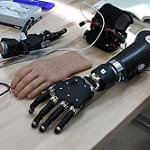
March 2019
A Zombie Got My Leg Challenge: Making Makeshift Legs Activity
Engineer a prosthetic leg and save a team member from a zombie horde! The scenario: a group of students must rush to build a prosthesis for an injured individual who "lost" their leg to amputation. Using the full engineering design process, students act as engineers to design and fabricate a replacement limb using specific starting materials. The students also face the additional challenge of overcoming a set of constraints, but time is running out... and the zombies are approaching!

February 2019
Requirements & Constraints: Making Model Parking Garages Activity
Draw like an architect, design like an engineer! In this cross-disciplinary activity, students learn what it means to follow a set of requirements and meet given constraints as they create their own model parking garages. Student teams follow the engineering design process as they design, build, and test their models. Along with drafting blueprints of their designs, students select construction materials and budget their expenditures. They also test their structures for strength and calculate maximum loads. Which model garage can hold the most cars while standing up to the challenge?

January 2019
Descriptive Measurements: Don't Confuse Your Qs! Activity
What's the difference between a "qualitative" measurement and a "quantitative" one? In this activity, students examine these key measuring concepts and learn how engineers use them when designing or evaluating a product. After gaining an understanding of what goes into a qualitative and quantitative assessment, students put their newfound knowledge to the test by using a ruler, scale, and pencil to describe and measure a variety of classroom objects.
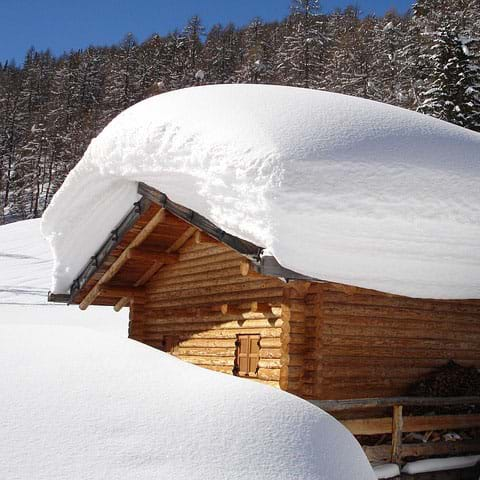
December 2018
Simple Snow Load Roof Model Demo: Which Roof Is Tops? Activity
How do civil engineers design structures that can withstand local weather conditions? Whether you live in a climate with heavy snowfall or not, this engaging activity helps even very young students consider the advantages of different roof shapes under a "snow load" by sprinkling cups of flour onto model houses. What happens to snow when it sits on a curved roof? What are the design advantages to building an A-frame roof versus a flat roof? As a class, test the roof shapes of three “model” houses. Then discuss and explore different shapes and materials to create buildings that are strong enough to exist in a winter wonderland!
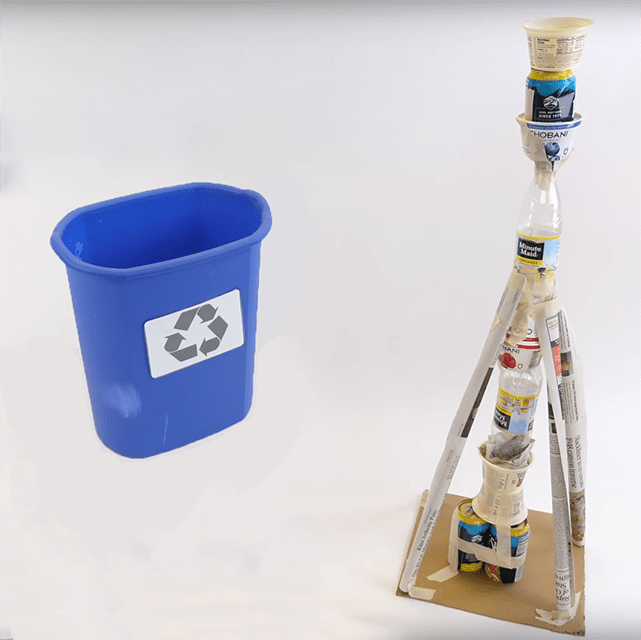
November 2018
Test & Improve: Making Tall & Strong Recycled Towers Activity
Can engineers build soaring towers with reused materials? While reinforced concrete and steel reign supreme as traditional building materials, many engineers are exploring ways to incorporate reused and recycled materials into their designs. In this activity, elementary-level students take on the role of engineers to design their own towers! Along with the challenge of designing their towers under a number of constraints, students also simulate "stress tests" to test the stability of their designs. Will your students' designs hold up under the simulated strong winds and earthquakes?

October 2018
Exploring Variables While Testing & Improving Mint-Mobiles Activity
On your mark, get set, build! Using lifesaver-shaped candies, plastic drinking straws, Popsicle sticks, and other simple craft materials, students design, build, and test model race cars as a way to explore independent, dependent, and control variables. After constructing their "mint-mobiles," it's time for the race! Students measure the changes in distance traveled while adding mass to their vehicles. Through this activity, students engage in the steps of the engineering design process by brainstorming, planning, building, testing, and improving their racers. Wave the green flag, and let the engineering begin!
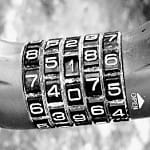
September 2018
Mountain Rescue: Transmitting & Receiving Code Messages Activity
Crack the code, engineer a rescue, and be the hero! In this engaging activity, students encode, decode, transmit, receive and store messages for a hypothetical rescue mission. They are challenged to rescue four misguided climbers who are stranded on a snowy mountainside—with temperatures plummeting fast! Once students find the climbers, it's a race against time to communicate to basecamp using coded messages about whether or not the climbers are injured. Additionally, students need to communicate the climbers’ locations using only flashlights, a map, and a code sheet. Through this activity, students practice coding and decoding, which are important aspects in electrical and computer engineering. Several activity extensions enable students to explore real-life coding and communication applications.
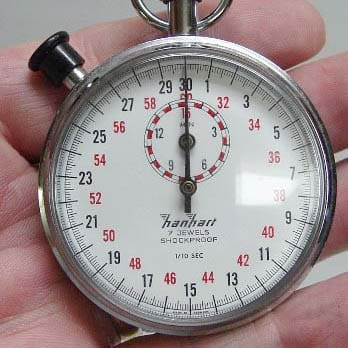
August 2018
Designing Harmonic Timing Devices: Ready, Set, Escape Activity
Ready, set, escape! In this open-ended design activity, students are challenged to create a simple yet accurate timing device that measures a period of exactly three minutes in order to enable a hypothetical prison escape. Constrained with limited supplies, students exercise their creativity and engineering knowledge to design devices. They also follow the steps of the engineering design process and document this on a student handout: they brainstorm ideas, select the best solution to pursue, and sketch their designs. After building prototypes, students test and record their times, and then iterate their designs for improvement—to obtain a more accurate time. During this process, students learn about harmonic design while observing and explaining the effects of conservation of energy. This activity aligns to NGSS, ITEEA as well as state science standards.

July 2018
Model Earth Core Samples: What’s Down There? Activity
How is oil found? In this hands-on elementary-level activity, students explore the layers under the Earth’s surface and learn how they are used by engineers to find and extract oil. Students learn how fossil fuels are formed over time and where they can be located under the Earth's crust. Student groups use six colors of modeling clay to make models of the planet Earth. They learn about core drilling as a method to find oil using cores taken from deep below the Earth’s surface. They use clear plastic drinking straws to model core drilling and take core samples—as if they are looking for fossil fuels. Then the teams analyze their samples and make informed decisions as to whether or not they should "drill for oil" in specific locations. This activity aligns to NGSS and includes a helpful YouTube video that models the activity.

June 2018
Just Like Kidneys: Semipermeable Membrane Prototypes Activity
As one of our partner teachers said, “This is a great open-ended design activity with lots of redesign built in—and it ends with the class building the best prototype membrane with contributions from each group.” The challenge is to make a semipermeable membrane prototype that does not immediately let water pass through. Students brainstorm, create and experiment with possible solutions. They get valuable practice in evaluating competing design solutions for how well they meet the criteria and constraints, and modeling cell functions like osmosis and diffusion—experiences that meet engineering and science NGSS. Typically, many middle school students have heard of dialysis and might know that it has something to do with filtering blood. After this activity, they will have experienced a cool engineering design project and gained a better understanding of how filtering occurs in this common medical procedure. A pre/post quiz, student worksheet and project rubric are provided.
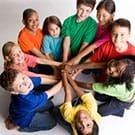
May 2018
Class Lava Crossing Challenge: Hot Problem Solving Activity
The challenge: get the entire class from one location to another spot 20 feet away without touching the ground between because it is covered in hot lava! In this open-ended, physically active elementary-age activity, the entire class works together to problem solve—and learn the steps of the engineering design process as they go. Together, students brainstorm, sketch and compose a well thought-out plan, which they test and revise outside. A concluding discussion connects students' problem-solving experience to real-life engineering challenges, such as inventing new products or better ways to run a factory. Keep this activity handy for a day when the kids want to be outside—or for an ice-breaker, afterschool club or summer camp! Includes a design and brainstorming handout. Meets NGSS and ITEEA engineering design standards.

April 2018
Solving Everyday Problems Using the Engineering Design Cycle Activity
Can’t find anything in the closet? Broken backpack strap? Bookshelf that keeps falling over? Being able to “solve everyday problems” is a skill worth cultivating! This exemplar activity shows middle school students how to apply the engineering design process to daily life situations that need improvement—and it meets all four NGSS engineering design standards. Students learn the steps through a slide presentation and a written case study with photos. They walk through two real-life examples of how kids figured out and implemented solutions to improve a teacher’s homework return process with a desk organizer and address the chaos of a student’s school locker. They learn to define project criteria and constraints, brainstorm ideas, evaluate multiple possible design solutions, and optimize the best solution. This prepares students to develop their own innovations to real-life problems, and to conduct the optional open-ended hands-on extension—to creatively design and construct their own locker organizers using scrap materials. Students gain the tools to view the world as a place where they can actively make a difference.

March 2018
Bone Transplants—No Donors Necessary! Activity
Did you know that engineers can create replacements for nonfunctioning body structures—without any donors(!)—through bone tissue engineering?! In this hands-on and engaging activity, high school students act as biomedical engineers to design turkey femur prototypes intended as bone transplants for birds. They use calipers to take exact measurements of a real turkey femur, aiming to make their 3D models match the structure, mass and density of the real bone. Using modeling clay and other craft materials, students create 3D bone prototypes. Then they cut and measure the turkey femur cross-section, draw it in CAD software and print it on a 3D printer. Throughout the activity, students follow the steps of the engineering design process to design their prototypes. They also watch an informative TED video about using 3D printers to create organs to address the problem of long waits for organ transplants. This activity aligns to several science and math standards, including NGSS and CCSS.

February 2018
Can You Hear Me Now? Activity
Have you ever received an electronic device in the mail only to find it damaged during shipping? How frustrating! In this hands-on and relatable activity, students act as engineers to solve the real-world challenge to design a better packing solution for shipping cell phones. They apply scientific, mathematic and engineering ideas to design, evaluate and refine a solution that minimizes the force on an object during a collision. They work through the engineering design process to create new packaging that prevents shipping damage while considering design constraints such as cost and weight; they combine different materials—such as cardboard, fabric, plastic and rubber bands—to create new “composite material” packaging and use pieces of glass to model a cellphone during testing. Additionally, students apply their knowledge of linear regression to accurately predict the optimum drop height that can be obtained without the “phone” breaking. At the end, students write summary lab reports to describe what they did in the project, their results and findings. This activity aligns to several science and math standards, including NGSS and CCSS.

January 2018
Help Bill! Bioprinting Skin, Muscle and Bone Activity
3D bioprinting can be used to treat injuries! In this informative and engaging hands-on activity (that does not require 3D printers!), a humorous one-minute video presents high-school students with a hypothetical scenario that introduces "Bill," who has been badly injured in an automobile accident, damaging some bone, muscle and skin beyond repair. Students act as biomedical engineers to replace Bill’s injured areas with bioprinted bone, muscle and skin grafts. They create mock bioprinters from ordinary materials—cardboard, dowels, wood, spools, duct tape, zip ties and glue—and use squeeze-bags of icing to lay down tissue layers. Student teams apply what they learned about biological tissue composition and tissue engineering in the associated lesson to design and fabricate model replacement tissues. They tangibly learn about the technical aspects and challenges of 3D bioprinting technology. To conclude, teams present their prototype designs to the class. The activity includes helpful videos of mock 3D-bioprinter assembly and use instructions. This activity aligns to several science and math standards, including NGSS and Common Core.
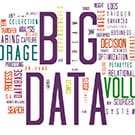
December 2017
Big Data, What Are You Saying? Activity
What exactly do we mean by “big data”? These days, big data is the accumulation of vast amounts of information from various sources—such as online user browsing and shopping—and the creative analysis of that data to learn from it. In this math-strong activity with a trending real-world connection, high-school students act as R&D entrepreneurs researching variables affecting the market of chosen products using big data to form and support conclusions. Students first identify a product (maybe a video game, shoe, food) and brainstorm production and marketing variables (such as product cost, price, materials). After researching and collecting pertinent consumer data, they import, organize and analyze the data using Excel and other software to inform their product production and marketing plans. They calculate statistics and generate graphs to discover relationships between variables that are essential for decision-making. Based on their findings, students suggest product launch strategies and present their conclusions to the class. This activity is ideal for high school statistics classes and aligns to several math standards, including CCSS.

November 2017
Mmm Cupcakes: What’s Their Impact? Activity
Who doesn’t like cupcakes? In this activity, students apply their math skills to determine the environmental impact of this favorite snack over its life cycle. As a class project, they conduct a life-cycle assessment of one cupcake. To do this, six teams examine and make calculations about the energy use and emissions release at each of the six steps in the cupcake life cycle. They pull together the numbers and compare various life-cycle stage options, such as two possible disposal endings—landfilling vs. composing of discarded cupcake paper liners. Students come to see how every object they encounter has a complete life cycle—from cradle to grave—which is worth critiquing to design smarter. After finishing this activity, one fifth-grade student stated: I liked learning about life cycle assessment. I got to know how people could see where an object came from and all the energy it needs at each step to make it. Now I look at things around me and try to think where they came from.”
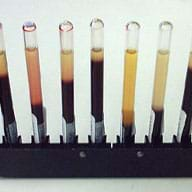
October 2017
Diseases Exposed: ESR Test in the Classroom Activity
High school students jump into biomedical engineering in this hands-on stimulating lab activity by simulating a real-world diagnostic screening test that’s used around the world daily to identify diseases present in people. Students model the erythrocyte sedimentation rate (ESR) test, which is a simple blood separating test based on the sedimentation technique that medical professionals use to provide diagnostic and medical care. In their lab work, student teams modify a blood model composed of tomato juice, petroleum jelly, butter and olive oil to simulate conditions such as anemia, rheumatoid arthritis and leukocytosis. They explore the three stages of sedimentation—aggregation, settling and packing—and measure the ESR as the plasma height that lies over the erythrocyte sediment. If a disease is present, the ESR value deviates from the normal value because diseases alter blood composition such as density and viscosity, enabling students to correlate their measurements for each blood sample with disease conditions. This activity is packed with numerous informative videos and aligns to NGSS, ITEEA and other science standards—a great way to bring biomedical engineering into chemistry class!

September 2017
Gears: Lift It Up! Activity
Using the “right” gears can be like having superpowers! Finding the ideal gear ratio can make seemingly impossible tasks possible. In this optimization activity geared towards middle schoolers (pun intended!), students learn about the trade-off between speed and torque. They are challenged to design a gear set that can lift a given load (provide enough torque) as fast as possible. Using a LEGO robot pulley system with two independent gear sets and motors that spin two pulleys with weights attached by string, teams test and refine their designs to attain an ideal gear ratio for the system. They learn how to choose the gear ratio for a specific task and discover the trade-off between power and speed. A pre-activity teacher demo illustrates the effect of adding increasing amounts of weight to pulley systems with different gear ratios. This activity aligns to NGSS, CCSS, ITEEA and other science and math standards. Pre/post quizzes and a student worksheet are provided.

August 2017
Mutation Telephone Activity
Who remembers playing “telephone” as a kid? In this engaging biology activity, teens learn about DNA mutations. They enact the popular childhood “telephone” game to illustrate how DNA mutations occur over several cell generations—each communication step representing a biological process related to the passage of DNA from one cell to another. The game starts off with the first student in a line receiving a set of instructions that represent a single gene from an organism’s DNA. This student whispers the instructions to a second student, the second to the third, and so on until the message reaches the last student who then performs the instructions that s/he was told! Comparing the initial and final instructions reveals the types of mutations (normal, substitution, deletion or insertion) that occurred in the person-to-person (cell-to-cell, natural or genetically engineered) communications. In the second part of the activity, students use their results to test how mutation affects organisms' survivability in the wild by demonstrating natural selection through “predatory” enactments. This activity aligns to NGSS, ITEEA and other science standards, and includes a worksheet.

July 2017
Volumes of Complex Solids Activity
"This is dense, creative curriculum—a gem for AP calculus teachers," said one of our partner teachers. In this challenging week-long activity, students are presented with a hypothetical engineering situation for which they need to determine the volume of a nuclear power plant’s cooling tower. In order to complete the task, students learn a detailed volume estimation procedure for complex solids. They first practice using the volume procedure on small objects before independently estimating the volume of a cooling tower. During both guided and independent practice, students use free geometry software, a photograph of the object, a known dimension of it, a spreadsheet application and integral calculus techniques to calculate the volume of complex shape solids within a <5% margin of error. Students create a blueprint of their complex solid of revolution and use an appropriate scale factor to estimate its dimensions, which can be used to calculate its volume. This activity meets many science, math and technology standards, including NGSS, CCSS and ITEEA.
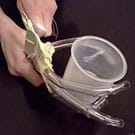
June 2017
Lending a Hand: Teaching Forces through Assistive Device Design Activity
A pair of glasses, a hearing aid, a cane and a crutch—what do these objects have in common? They are all assistive devices that help people see, hear and walk! In this project-based activity, students act as biomedical engineers as they design and test assistive hand device prototypes to help a 12-year-old boy with cerebral palsy grip a cup. In doing so, students learn how biomedical engineers create assistive devices for persons with fine motor skill disabilities; they also learn about types of forces (balanced and unbalanced), form and function, and hand structure. Given design criteria from the client—including limited materials and a $50 budget—teams follow the engineering design process steps by conducting research, brainstorming ideas, sketching, constructing and testing prototypes. They test to see if the prototype devices can grip a cup with 200 ml of sand. Then they redesign, re-test, and make improvements. Finally, students reflect on their designs and the process. This activity meets science, math and technology standards, including NGSS, CCSS and ITEEA.
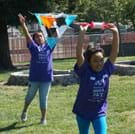
May 2017
Elementary School Engineering Design Field Day Unit
Have you ever considered having an "engineering design field day" at your school?! The 10 design project activities in this unit are each great on their own: spaghetti soapbox derby, naked egg drop, and building skyscrapers, towers, wind-powered sail cars, bridges and water bottle rockets. But consider combining them to give middle school students practice in the engineering design process as they prepare their designs for an entertaining and culminating seven-hour field day competition. As a bonus, include a "math competition" as part of the day—using the provided six math tests for grades 1-6 students. End the day with awards for the winning designs!

April 2017
Design Your Own Snazzy Sneakers Maker Challenge
Woo-hoo! TeachEngineering has joined the MAKER MOVEMENT! We just added "Maker Challenges" to the collection—like this one about making shoes! Students come up with their own design requirements for a new type of shoe— for a specific activity or a specific "look." They sketch plans and build prototypes, then test and improve them. As with all Maker Challenges, the experience is student directed and easy to scale up or down. TeachEngineering provides the basic challenge along with suggested materials and teacher prompts. If you have maker activities that worked well with your students, consider writing them up and submitting to TeachEngineering for publishing—to share with others!

March 2017
Chromatography (for Informal Learning) Informal Learning Activity
In this easy-prep, “taste of engineering” activity, youngsters see the separation of ink into its components. They place permanent marker ink on coffee filter paper that is dipped into isopropyl alcohol; then they repeat with water to see if the results are different. The process—called chromatography—is a way to look at complex mixtures by separating them into their components. It’s not a chemical process; it’s a physical process because the mixture components are not chemically combined. To wrap up the 45-minute activity, students share their findings and learn that different inks have different properties such as how well they dissolve in certain types of solvents—which is important for many real-world applications like criminal evidence investigation and pollution cleanup. This engaging “sprinkle” is ideal for after-school clubs and scouts, and is also available in Spanish!

February 2017
Glaciers, Water and Wind, Oh My! Activity
What is erosion and how does it relate to math and engineering? In this hands-on, math-enriched activity designed for fifth graders, students learn about five types of erosion (chemical, water, wind, glacier and temperature) as they rotate through stations and model each type on rocks, soils and minerals. Students learn about the effects of each erosion type and discover that engineers study erosion in order to design ways to protect our environment, structures and people’s lives. In a series of real-world scenarios (math word problems), students make calculations about the effects of erosion, including calculating erosion damage on forest, personal property and mountains, as well as determining the cost of damage. This activity includes two student worksheets and is part of a nine-lesson and 16-activity elementary-level unit called “Engineering for the Earth.” The activity meets several state and national math standards including CCMS, and science and technology standards, including NGSS and ITEEA.
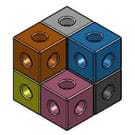
January 2017
Let’s Learn about Spatial Viz! Lesson
"I love this curriculum. It’s scalable for middle and high school students, and it’s an important skill that is typically overlooked," said one of our partner teachers. While years of research have linked spatial visualization skills to success in engineering, NEW research shows that spatial visualization skills can be LEARNED. To begin this lesson, students complete a 12-question, multiple-choice spatial visualization practice quiz. Then, through four associated activities, students work through hands-on, interactive and tangible exercises on the topics of isometric drawings and coded plans, orthographic views, one-axis rotations and two-axis rotations. Finally, students take the quiz again to see how they've improved. This curriculum is the result of years of testing with first-year engineering college students, and has proved successful in improving student spatial visualization skills—thereby setting them up for success in engineering. Bring SV into your classroom today!

December 2016
Visual Art and Writing in Science and Engineering Lesson
How can engineers display data and results in an aesthetically pleasing, easy-to-understand way? In this high school lesson, students learn the value of—and connections between—art and writing in both science and engineering. They learn the principles of visual design (contrast, alignment, repetition and proximity) as well as the elements of visual design (line, color, texture, shape, size, value and space) to acquire the vocabulary to describe visual art and design. Engineers often need to convey their designs and ideas visually to create buy-in, appeal to clients or win research funding. So engineers must be able to creatively and clearly communicate their work and designs—often using art. Students also learn about the science and engineering research funding process and heat flow/thermal conductivity basics, which prepare them for the associated engineering design activity in which they create visual representations to communicate their collected experimental data. This lesson and activity meet many math, science and technology standards, including CCMS, NGSS and ITEEA.
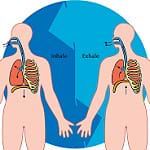
November 2016
Creating Model Working Lungs: Just Breathe Activity
Breathe in. Breathe out. What is happening to your lungs as you inhale and exhale? In this popular hands-on activity, students learn about the respiratory system and explore the inhalation/exhalation process of the lungs. Using everyday materials (2-liter plastic bottles and balloons), students act as engineers and create model lungs to analyze their function and the overall breathing process. They learn that during inhalation, the volume of the thoracic cavity increases while pressure in the lungs decreases, and that during exhalation, the volume of the thoracic cavity decreases while pressure in the lungs increases. By studying the respiratory system, engineers have been able to create life-saving technologies such as the heart-lung machine that keeps patients alive during heart transplant procedures. Students learn about the many engineering advancements that have helped people who have respiratory system difficulties. At activity end, student teams demonstrate their models and explore what happens to the respiratory system if punctured. This upper elementary-level activity meets science and technology standards, including NGSS and ITEEA.
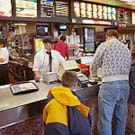
October 2016
Trade-Offs and Maximizing Efficiency in a Fast Food Restaurant Activity
Can you improve the efficiency of a fast-food restaurant through engineering analysis and design? In this thought-provoking activity, students attempt to improve the efficiency of a fast-food restaurant that is financially struggling due to inefficient daily routines by considering trade-offs and constraints. Acting as engineers, students identify strengths and weaknesses in the existing system and generate a plan to improve efficiency—such as restructuring employee responsibilities, revising a floor plan and delegating tasks—while following requirements and limitations. Students culminate their analyses by writing argumentative essays summarizing and defending their suggested changes and improvements. This activity is especially engaging for students with workforce experience, helping them make meaningful connections between their everyday experiences and engineering. The activity is suitable for middle and high school students and meets science and technology standards, including NGSS and ITEEA.

September 2016
Alloy the Way to Mars Activity
NASA needs your help! What alloy would you recommend they use for a new engine intended to transport astronauts to Mars? In this straightforward activity that requires few materials, students must think like real-world engineers to help NASA decide which material to use for its RS-25 engine and turbine design. Student groups work as engineering teams, taking various measurements and performing calculations to determine the specific strength of different alloys. Students test to look for a material that is both strong and lightweight and discover that a higher specific strength yields a stronger, more lightweight material. Students learn about the ultimate tensile strength, the maximum amount of stress a material can sustain before failing, and use that and the material density to calculate specific strength of the various alloys. The activity culminates in a creative writing project as students compose letters to the Deputy Program Manager at NASA outlining their recommendations. Geared towards middle school students, this activity meets science and technology standards including NGSS and ITEEA, and comes with a preparatory lesson.

August 2016
Intraocular Pressure Sensor Design Challenge Activity
Imagine one day that you open your eyes and realize that you can only see a small portion of your surroundings—much of your range of vision is gone! Many people with glaucoma experience this every day. In this engaging activity, middle school students experience how engineers help people; they act as biomedical engineers to design pressure sensors that measure eye pressure and use 3D software to design and print 3D prototypes of their sensors (or modeling clay as an alternative). Presented with personal stories of two people with glaucoma, student teams are challenged to develop prototypes that can help them identify pressure changes in the eyes. Students learn about radio-frequency identification (RFID) technology and conduct research on pressure gauges. They are given project requirements: designs must use RFID technology, be lightweight and small, and measure eye pressure. Over seven days, teams determine an appropriate pressure gauge, design an intraocular pressor sensor prototype given constraints, 3D print the prototypes, and present them to the class. This activity meets many STEM standards, including CCMS, NGSS and ITEEA.
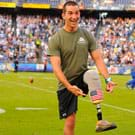
July 2016
Prosthetic Party (for Informal Learning) Informal Learning Activity
Imagine you are a runner, but you lost a leg in an accident—how can you keep running? In this easy-to-prep informal learning "sprinkle," middle school students design, build and test prosthetic legs in two hours using ordinary household materials. First, students learn about prostheses, the importance of replacement legs for individuals who have lost their leg(s) to accident or injury, and are tasked to follow the steps of the engineering design process to make prosthetic leg prototypes. Student teams discuss important features of replacement legs and brainstorm design ideas. They choose fabrication materials from provided supplies, sketch their design plan and gain instructor design approval prior to constructing their prototypes. After building, students test the prosthetic limbs, making sure they can be used to walk successfully around the classroom (crude but functional!). Students improve their designs as necessary and present them to the class at the end. This engaging and fun "sprinkle" is also available in Spanish!
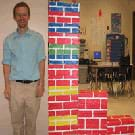
June 2016
As We Grow: Measuring Heights and Graphing Data Activity
How tall are you? In this kindergarten activity, students get to meet older schoolmates and explore their schools while measuring the heights of the older students using large building blocks, which they later translate into pictorial bar graphs. This activity provides a fun and refreshing way to introduce young students to measurement and graphing at an early age; they learn how to take real-world measurements and then graph and examine the data. The kindergarteners visit second and fourth grade classes and work in pairs to make height measurements of students and adults by using large building blocks and keeping tallies. Back in their classroom, they glue pre-cut construction paper rectangles (~1-3 inches in size, representing the building blocks they used for measurement) onto lined chart paper to make bar graphs of the different height measurements. Then they compare the heights of second-graders, fourth-graders and adults—discussing the differences and patterns, sorting the heights from tallest to shortest and determining the median height. This activity meets many math, science and technology standards, including CCMS, NGSS and ITEEA.
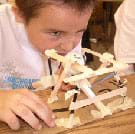
May 2016
Right on Target: Catapult Game Activity
Ready, set, catapult! In this hands-on activity, student groups are tasked with designing and constructing precise and accurate catapults using everyday materials and guidance from the engineering design process. With the goal to launch ping-pong balls to hit different targets, student teams experiment with different designs. Will the catapult shoot the ping-pong ball far enough to hit the target? Students must apply an understanding of projectile motion to determine the best launch angle to travel the farthest distance. They analyze the different forces acting on their catapults and make their structures robust enough to withstand them. After constructing their catapults, students test their structures and see how many targets they can successfully hit. Teams earn points for hitting targets and tally their scores to determine a winning team. Students present their designs to the class, suggest improvements and discuss the characteristics of successful catapults. This engaging and playful activity meets many math, science and technology standards, including CCMS, NGSS and ITEEA.
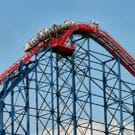
April 2016
Physics of Roller Coasters Lesson
Ack! You are at the top of a roller coaster about to drop—then, thanks to physics and engineering, you make a safe landing despite all the jitters! In this lesson, middle school students learn about the physics behind roller coasters, investigating potential and kinetic energy as well as friction and gravity, and explore how engineers apply the basics of physics to roller coaster designs. They learn how the force of gravity drives roller coasters and that the conversion between potential and kinetic energy is essential to its motion. In addition, they learn how roller coasters slow down due to friction and the role that velocity and acceleration play in the motion of these exhilarating rides. This imaginative lesson provides the necessary background knowledge for its associated activity, "Building Roller Coasters," in which students design and build model roller coasters. This lesson geared towards upper middle school students meets many science and technology standards, including NGSS and ITEEA.
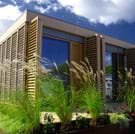
March 2016
Zero-Energy Housing Activity
Brrr! It's a chilly March night—can you think of a way to heat your house without using an electric or gas heater? In this hands-on activity, teens design and construct one-bedroom model houses within specified constraints (and a variety of material options) and are challenged to warm up their houses as much as they can and maintain the heated temperatures for as long as possible using passive solar heating design techniques. Students learn about solar heating (including how insulation, window placement, thermal mass, surface colors and site orientation are all essential in design), and apply learned concepts to the design and construction of their model houses. After constructing, students test their model homes during simulated daytime and nighttime conditions to examine thermal gains and losses. Finally, students present and compare their designs and suggest improvements. This engaging high school activity meets multiple science and technology standards, and is NGSS and ITEEA aligned.
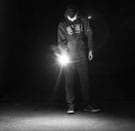
February 2016
Light Your Way: Design-Build a Series Circuit Flashlight (for Informal Learning) Informal Learning Activity
Quick! The power is out, you're in the dark and immediately grab your flashlight. Ever wondered how flashlights work? What makes them light up so easily? In this easy-prep informal learning sprinkle, elementary students design, build and test their own flashlights. Student first learn and discuss the essential components of flashlights: the importance of a switch, how flashlights are composed of a simple series circuit, and that the batteries and switch must be correctly oriented to work. Given a list of available supplies, they sketch their own flashlight designs that incorporate a switch, a reflector-enhanced light (such as with foil) and batteries contained in a paper tube. After building, students test for reliability, checking to see if the light can be turned on three times in a row. Students improve their designs as necessary and present their flashlights to the class at the end. This is a great starter engineering project—good for afterschool clubs and rainy afternoons. Also available in Spanish!

January 2016
Engineering a Mountain Rescue Litter Activity
Imagine hiking in the mountains, suddenly getting injured and being unable to walk. In this hands-on design challenge, elementary-age students consider this situation and act as engineers to create rescue litters/baskets for use in hard-to-get-to places such as mountainous terrain. Using a potato to model an injured person, teams build small-sized prototypes that meet given criteria and constraints: lightweight and inexpensive, break down to be small and portable, quick assembly and stable transport of an injured body. They learn about the human bodys nerves and spinal cord and the importance of protecting it. They "purchase" ordinary building materials such as toothpicks, paper towels, craft sticks, foil and sponges to design and build prototypes. Through timed tests, they assess their design success in assembly and transport of the injured person (potato). Then students compare statistics (litter mass, cost, stability and rescue time) and graph all team data, analyzing the results to determine which designs performed best. Part of a biomedical engineering unit, this engaging activity meets many science and technology standards, including NGSS and ITEEA.

December 2015
Clearing a Path to the Heart Activity
Can you think of a way to unclog blood vessels? In this open-ended design project, student teams act as biomedical engineers to create and build devices capable of removing and/or flattening plaque build-up inside artery walls. They follow the steps of the engineering design process, apply their knowledge of the circulatory system and learn about existing methods to treat blocked arteries (angioplasty/stent and coronary bypass surgery). First they gain an understanding of the need (chest pain, heart attacks), then brainstorm ideas, design and plan, create and test a prototype, and then refine their designs. Students assess their success by first observing how two liters of water flows through model clogged arteries (tubes with play dough or peanut butter in them) and then timing how fast the water flows through the cleared arteries. Students present their designs to the class, explaining what worked and what improvements are needed. This middle school activity is part of a larger biomedical engineering unit and meets many math, science and technology standards, including CCMS, NGSS and ITEEA.

November 2015
Mars Rover App Creation Activity
Did you know that the Mars Curiosity rover discovered water on Mars?! How do engineers develop such an intelligent vehicle capable of such vast exploration? In this activity, students explore the programming and technology realms to discover and create Android apps capable of controlling LEGO® MINDSTORMS® NXT robots to simulate a planetary rover remote sensing task. Using MIT's App Inventor software, student teams create their own mobile applications that they execute on Android devices to control specific aspects of an NXT robot. They might program actions such as driving the robot, moving an arm, detecting objects, applying a game or using a light sensor. Student teams follow the steps of the software/systems design process and gain programming design experience. Groups present their apps to the class and demonstrate how they control a robot. This middle/high school activity meets many science and technology standards, including NGSS and ITEEA.

October 2015
Above-Ground Storage Tank Design Project Activity
Most people take no notice of above-ground storage tanks in their communities! The tanks might contain water or petrochemicals in liquid or gas form, or other industrial explosive and toxic materials. What's important is that engineers design the tanks to be structurally sound—and hopefully strong enough to remain intact during major storms and hurricanes! In this activity, teens act as engineers in design teams tasked to examine the stability of certain above-ground storage tanks (and demonstrate their understanding of Archimedes' principle and Pascal's law). Guided by worksheets and during five class periods, they derive equations and make analyses to determine whether the storage tanks will displace or remain stationary in the event of flooding. Then they are challenged to think of improved designs to prevent displacement and buckling. They present their results and design ideas to the class. This high school activity concludes the Above-Ground Storage Tanks in the Houston Ship Channel lesson, which is part of The Physics of Fluid Mechanics unit, and meets many science, math and technology standards, including NGSS and Common Core Math.
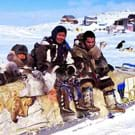
September 2015
What to Wear? What to Drink? Weather Patterns and Climatic Regions Lesson
Youngsters know the foods they eat and the clothes they wear, but may have never made the connection to climate. In this elementary-level lesson, students learn the effects of climate on our food options and water sources, as well as on our clothing and shelter types. In small groups, students role-play families living in different regions around the globe and determine where they live based on their clothing and food (provided on notecards). They discuss factors that affect the climate such as latitude, elevation, land features and weather, and learn about different climates such as tropical, desert, alpine, oceanic. They also learn how engineers develop technologies to predict and be protected from weather and climate. In the associated activity, students learn the steps of the engineering design process as they explore ways to provide water to a (hypothetical) community facing a water crisis. This lesson is part of a nine-lesson unit, "Engineering for the Earth."

August 2015
Composting – Nature's Disappearing Act Activity
What happens to trash when you throw it away? What does it mean to be "environmentally friendly"? Elementary school students build and then observe small model landfills over five days as a way to learn about biodegradability and the processes that engineers use to reduce solid waste. The simple model landfills are created in cut-apart two-liter plastic bottles with four garbage samples tested: paper, apple, lettuce and plastic. Students make predictions and then note how the different items biodegrade over time. From this, they learn that engineers optimize the composting process and improve landfills so food, animal and other waste are converted into high-nutrient soil. They experience modeling; a common engineering approach to understand and improve how things work. This fun activity meets many science, math and technology standards, including NGSS and Common Core Math.
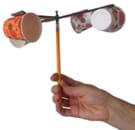
July 2015
Build an Anemometer (for Informal Learning) Informal Learning Activity
What is an anemometer? And how is it useful? In this easy-prep informal learning sprinkle (which takes less than an hour to conduct!) student pairs build and use simple paper-cup anemometers to measure wind speed as if they were engineers identifying good locations for wind turbines. Elementary students are able to determine relative speeds by counting rotations of the spinning paper cups. By measuring wind speed at five outside locations, students see how it varies and where it is strongest, which helps them understand how knowing wind speed at multiple locations is important. For wind turbines, stronger winds generate more electricity! Real-time wind speed data collected at airports helps pilots safely take off and land. Continuously measuring wind speed at uncountable locations around the planet provides essential data for weather prediction and public safety alerts.

June 2015
Animals and Engineering Lesson
What do animals have to do with engineering? Some students might be surprised to hear that animals are directly related to engineering! In fact, some of the most remarkable engineering innovations were inspired by animals and nature. In this lesson, students learn the role of animals in engineering innovation, particularly how animal characteristics and features are mimicked in engineering design to create new technologies—otherwise known as biomimicry. Such examples of biomimicry include airplanes, boats, underwater sea vessels, and antibiotics and healing drugs. Additionally, students learn about animal interactions and the basic animal classifications to better understanding how animals live and to relate the natural world to engineering innovation. This informative and interesting lesson, targeted for elementary school students, meets both NGSS and Common Core Math standards. Image source: Dreamstime.com
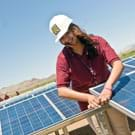
May 2015
Ice, Ice, PV! Activity
As the use of renewable energy grows, most teenagers have seen photovoltaic solar panels in their communities and on everyday items such as back packs, battery chargers and outdoor lighting devices. These photovoltaic (PV) solar panels generate power that can be used in many applications in their lives. In this activity, students explore variables that affect the power output of PV panels to answer the question: “If engineers installed the exact same power plant in Las Vegas, NV, and Fargo, ND, would it produce the exact same amount of power over the course of a year?” Student teams collect data in this engaging hands-on activity and apply mathematical equations based on electrical power and the temperature coefficient to learn how temperature and climate affect PV panels and to predict the power output of PV panels at different temperatures. This activity also meets NGSS and Common Core Math standards. Photo credit: Candice Nyando, Black Rock Solar.

April 2015
Gravity-Fed Water System for Developing Communities Activity
Imagine having to carry water dozens of miles, up and around mountains, just to be able to boil that water for cooking and cleaning! Students learn the important role engineers play in the management of groundwater, and the importance of clean, accessible water. The realities of how water is acquired, and subsequently used, for daily survival—especially in developing countries—can be a new concept for students, especially Americans used to readily available clean water. Creating a system to transport water, helps “water poor” populations whose water does not come directly from a faucet! Students learn exactly how such a water transportation system is developed and used. This middle school-level activity meets one NGSS design problem standard.
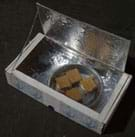
March 2015
Cooking with the Sun - Creating a Solar Oven Activity
Making solar ovens is a classic, fun and delicious engineering activity—and one with great potential to help others worldwide. Middle school students learn the value of solar ovens as they use cardboard, insulation, foil and Plexiglas to design, construct and test devices that apply their understanding of thermal energy transfer. Student teams devise solutions to meet problem criteria and constraints, as well as collect and analyze data to determine the effectiveness of their designs. Then, expand students' context for how a project like this can help others by showing them a video clip about Infinity Bakery—a low-cost solar oven design being prototyped in Burundi to enable smoke-free and fuel-free cooking and baking. This activity fits into many areas of study, including energy, social studies, planets and seasons, graphing and analysis—and meets many NGSS and Common Core Math standards.

February 2015
Using Nanoparticles to Detect, Treat and Protect against Skin Cancer Unit
In this NGSS-aligned unit, high school students learn about environmental and biomedical engineering through the study of nanotechnology and its relationship to skin cancer. Through three lessons and three associated activities, students learn about the electromagnetic spectrum, wavelengths and how the ozone helps block ultraviolet radiation; how repeated exposure to ultraviolet radiation impacts our skin with harmful, long-lasting effects; and how persons with skin cancer are treated with nanoparticles, a result of modern technological advancements employed by engineers around the world. After this unit, students will have an understanding of the causes, diagnosis and treatment of skin cancer and an appreciation of the vital role biomedical engineers and nanoparticle research play in preventing humans from the (oftentimes life-threatening) condition of skin cancer. This unit requires approximately 12 days (60-minute periods) to complete.

January 2015
Sugar Spill! (for Informal Learning) Informal Learning Activity
Oh no! There has been a major pollutant spill, and environmental engineers must clean it up fast. How can it be done? What can be used to "soak up" the spill? In this informal learning sprinkle, students see how environmental spills are contained through "bioremediation"—a process that plays an important role for engineers to quickly and efficiently clean up toxic (or non-toxic, but messy) spills. Through the use of common household products—in this case sugar, yeast and vinegar—students learn that engineers do not actually "soak up" environmental spills, but use chemicals to safely degrade (or "eat up") harmful bacteria to restore balance to an area affected by a contaminant.

December 2014
Oil on the Ocean Activity
Engineering design activities can play an important role in helping students make connections among the STEM subjects. This activity does that by engaging fifth-grade students in a fun, hands-on project to design, build, and re-design prototype oil booms to contain oil spills. This project weaves together a range of scientific concepts and topics, including ecosystems, material properties, density and pollution as well as considerations for the impact on wildlife, habitat and food supplies, related economic and political issues, and the use of technology by humans. Over three, hour-long class periods, student teams experience the full engineering design process, from understanding the problem and brainstorming solutions to drawing, prototyping, testing and redesigning solutions. Like real-world engineers, students work within given requirements and constraints, use assorted ordinary materials—duct tape, cotton balls, straws, sponges—and test their designs in miniature oil spill simulations. As a bonus, teaching this activity meets numerous NGSS (science) and ITEEA (technology) educational standards.

November 2014
Solar Water Heater Activity
It is easy to take for granted the luxury of a hot shower or bath. An engineering mind wonders: How did the water get heated? How much energy is used? What types of energy are used? Could we use energy from the sun to heat it? Ask your high school students these questions to engage them in this NGSS- and Common Core Math-aligned activity to create miniature solar water heaters. In the process, they deepen their understanding of conduction, convection and radiation—each of which plays a role in the heater design. After the hands-on design/build projects are completed, students perform efficiency calculations, compare designs and think of improvements—just like engineers—thereby also experiencing the analysis phase of the engineering design process. This activity also passed the extensive review process of the Climate Literacy & Energy Network (CLEAN).

October 2014
Power, Work and the Waterwheel Activity
Water is one of our world's most precious resources. Imagine if water could be put to work to make even another resource. Well it can! Water, on its own has a lot of power, but create a mechanism to harness that water power, and you can generate a lot of electrical energy. Why do we care about using water for creating energy? Well, energy is another precious resource for the inhabitants of our planet. This hands-on activity teaches middle school students about the power of water and why we care about harnessing water for energy use. Using simple supplies found at home or at a recycling center, students design and build their own water wheels, simulating hydroelectric power plants. They learn how engineers measure water power, and troubleshoot ways to increase that power. This activity is aligned to numerous standards, including NGSS, Common Core Math and ITEEA.

September 2014
Saving a Life: Heart Valve Replacement Activity
After this activity, students will never forget how heart valves work as part of the circulatory system! Acting as biomedical engineers, middle school student teams experience the full engineering design process as they brainstorm, design, prototype, test and redesign replacement valves for a large-scale model heart. Simple cardboard boxes with middle dividers model the left atrium and left ventricle chambers. A gap in the divider awaits implanted prototypes for artificial one-way mitral valves that must permit blood cells, represented by marbles, to move from the left atrium to the left ventricle, but stop blood flow in the opposite direction. Part of work includes defining the criteria and constraints of the problem while taking into account the science of the human body and possible impacts on people. They use ordinary materials—cardboard, wooden sticks, string, foil, tape and glue—to create working valve prototypes. Students' work is deepened by systematically evaluating competing design solutions to gauge their effectiveness. A worksheet guides the test evaluation procedure and scoring point system for comparing designs and material usage. This activity is aligned to numerous science standards, including Common Core Math and Next Gen Science Standards.
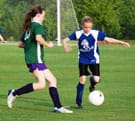
August 2014
Ramp and Review Activity
In so many of our everyday activities—playing soccer, controlling a skateboard, riding a bike—the physical science concepts of mechanical energy, work and power, momentum and friction are all at play. What do these terms mean? How do they relate to each other? And most importantly, how do they affect the motion of objects around us? In this activity, which meets both NextGen Science Standards and Common Core Mathematics standards, students conduct an experiment, collect data and perform calculations using energy of motion equations to gain a visual and computational understanding of these fundamental concepts of motion. Both middle and high school versions of this hands-on activity are available. Wrap-up discussion questions help students relate their new understanding of these concepts to the fun activities they enjoy!

July 2014
Do Different Colors Absorb Heat Better? Activity
What is the truth behind choosing clothing colors for warmth or cooling properties? Let's find out! Your students have soccer practice this weekend with temperatures predicted to be in the 90s. Is it better to wear white t-shirts or black t-shirts to keep cool at practice? Does one color really keep a body cooler compared to another color? Might one color increase body temperature? These questions and more are answered through this hands-on activity for younger students. Through experimentation with ice cubes and colored paper, students learn which colors absorb heat faster than others. Girls' and boys' natural curiosity makes this activity a fun extension to learning about light and energy and their engineering design applications.

June 2014
Earthquakes Living Lab: FAQs about P Waves, S Waves and More Activity
Where did earthquakes occur this week? How many? How big were they? Students hear about gigantic-magnitude earthquakes on the news, but may not realize earthquakes of all sizes are happening all the time, more than 50 a day! Through this worksheet-guided activity, students explore the U.S. Geological Survey's online database of real-time planetary earthquake data as well as other topical resources provided through the Earthquakes Living Lab. They learn all about seismic waves and see the data evidence of ongoing seismic activity on our planet. This is one of seven middle and high school activities provided in the Earthquakes Living Lab that guide students to examine where, why and how earthquakes occur, and explore ways engineers are improving our ability to survive them. These activities are aligned to numerous science standards, including NGSS.
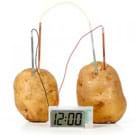
May 2014
Potato Power Activity
Power a clock with a potato?! An ordinary potato can be used as a battery to produce electrical current in a circuit! Understanding electrical energy is an important, but often difficult, concept for young students. This tried-and-true activity introduces the concept of electrical energy to fourth-grade students in a fun, hands-on experience using familiar items—potatoes and small LED clocks. Students learn about electrical energy and circuits, relating these concepts to technologies they use every day and the role of electrical engineers in designing them. Student groups make their own circuits with potato batteries, and receive instant gratification by seeing their LED clocks light up! To further demonstrate their understanding, students compare the voltage produced by various food items (potatoes, lemons and apples) to predict how many food items are needed to light different LED clocks. Additionally, teaching this activity meets standards from the Next Generation Science Standards and Common Core State Standards for Mathematics.

April 2014
Straw Bridges Activity
What do these words have in common: beam, truss, arch, suspension and cable-stayed? They are all bridge types designed by engineers. In this activity—a great classroom competition—students learn how bridges are vital structures that connect people from one area (an island or river bank, for example) to another (the mainland or opposite river bank), among many other situations for which linkages are necessary. Bridge design is not new to our society, but today's engineers are inventing and applying new materials and designs that enable bigger, stronger and more spectacular bridges than have ever been built. Students use plastic drinking straws and tape to create truss bridges within given design constraints, coming to understand the concepts of shape, load, tension and compression. Which team's bridge design will be the strongest?

March 2014
A Recipe for Air Activity
Breathe in, breathe out. What has filled your lungs? What exactly is "air" and why should we care? In this activity, students investigate the "recipe for air," otherwise known as the chemical composition of what invisibly surrounds us. Students use chocolate candies and pie charts to illustrate the chemical components of air. They learn about the different atmospheric layers: thermosphere, mesosphere, stratosphere and troposphere. By understanding our planet's atmosphere and the natural chemical constituents of air, students better understand air quality and what is meant by polluted air. This prepares them to begin to think like engineers and design ways to reduce air pollution and protect air quality. As an added bonus, conducting this activity meets one of the NGSS engineering education standards.
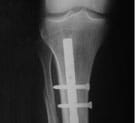
February 2014
Bone Fractures and Engineering Lesson
What do broken bones have to do with engineering? Many students have experienced broken bones and may not realize that the work of engineers helped in their recovery! Biomedical and materials science engineers are the masterminds behind the design and development of procedures and tools such as implant rods, pins, plates, screws, x-ray machines, cast material and bone grafts. This lesson is relevant to most teens because of their own experiences with injury, or those of friends and family, providing motivation to learn the science and engineering involved in bone repair. The lesson's associated activity gives students the opportunity to experience this type of engineering first hand by designing their own devices to mend broken turkey bones. Students learn about the human body and apply the engineering design process while gaining insight about real-world engineering that may affect their own lives! As a bonus, teaching this lesson meets one of the NGSS engineering educational standards.

January 2014
What Is the Best Insulator: Air, Styrofoam, Foil or Cotton? Activity
Help your students grasp the concept of heat transfer without going into the cold and teach a fourth-grade Next Generation Science Standard at the same time—both very cool! Ask your students: Would you rather have gloves made of fabric or aluminum foil? The answer lies in the properties of heat transfer. Fabric insulates our bodies, slowing down the time it takes for our hands to become cold. On the other hand, metals speed up the transfer of heat so any warmth in our hands prior to putting on "aluminum gloves" would quickly escape through the foil—brrr—leaving us with very cold hands. Engineers use their knowledge of the properties of heat transfer in their design of items we use every day for comfort, life-saving necessity and entertainment. Think about the casing that surrounds an iTouch®: If the case was made of rubber, the device would become hot very fast, and too uncomfortable to hold. Student teams test insulators to keep things warm and cold, collecting and analyzing the experimental data so they too understand how knowing the properties of heat transfer is a useful engineering skill.

December 2013
Building Roller Coasters Activity
What's more fun than riding a roller coaster? Building a roller coaster! That's just what your middle school students will find out while simultaneously learning about gravity, friction, potential and kinetic energy, g-forces and teamwork. In this engaging two-hour design challenge, student engineering teams create and build tabletop-sized model rollercoasters from simple materials—foam tubing, cups and tape. The activity involves creative brainstorming and design optimization, two key engineering concepts that may be new to your students, but they'll use again and again. Through this hands-on competition, in which a glass marble simulates a typical car, a wooden marble represents an empty car and a steel marble represents a full car, students see several key physics concepts demonstrated. A scoring rubric suggests points to award for creativity (height, 90/180/270-degree turns, loops and corkscrews) and performance (safe completion by three passenger/marble types). As a bonus, teaching this activity meets numerous NGSS (science) and ITEEA (technology) standards.
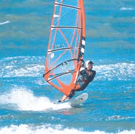
November 2013
Wild Wind Activity
What's the difference between global, prevailing and local winds? Engage your fifth-graders to make their own weather vanes and then collect wind direction data over a few weeks. They'll gain first-hand awareness of the direction of the prevailing winds in your region, and gain confidence in operating a simple tool in order to collect and analyze their own observations. This fundamental research approach mirrors what engineers do as they create measurement tools to understand wind behavior and apply what they learn to the design of safe structures, weather prediction models, electricity-generating wind turbines and even the placement of airport runways and wind farms. The wind vanes are made by attaching a provided arrow template to a drinking straw that spins freely in a plastic soda bottle anchored to a weighted pan. A worksheet guides students to learn vocabulary words and reflect on "what I've learned, what I've observed and questions I have." Teaching this activity meets one of the NGSS—to define a simple design problem.
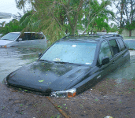
October 2013
Flood Analysis Activity
What does a "100-year" flood mean? A 100-year flood is one that is so large that the chance of it occurring in any given year is 1/100 or 1%. Unusually heavy rains in September 2013 in Colorado caused catastrophic flooding, damaging homes, mountain towns, roadways and trails. The impact might have been worse if engineers hadn't created flood risk maps and installed floodgates, culverts and other projects to mitigate floodwaters in populated areas during the past decades in anticipation of a "100-year" flood. In this high school activity, students use real-world streamflow data and spreadsheets to create their own hydrographs (plotting flow vs. time) and calculate flood frequency statistics—just as engineers do. They learn how the analysis of historical stream gage data helps engineers and communities make life-impacting decisions and plans about water resources and flooding. As a bonus, teaching this activity meets one of the new NGSS engineering educational standards.
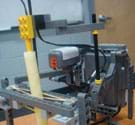
September 2013
All Fat Is Not Created Equal! Activity
While most TeachEngineering activities are low-cost and designed for use on a "shoestring budget," more than 50 new activities at a wide range of grade levels use LEGO® MINDSTORMS® NXT robots, which might be of interest if you have already invested in a supply of these great devices. This month's featured activity teaches students about different types of fat from a chemical and nutritional perspective. Students use the LEGO MINDSTORMS NXT temperature and light sensors to determine the melting point of various types of fat. They apply data analysis skills to graph their collected data and make predictions on how our bodies would digest each type of fat. This engaging activity introduces students to researching with technology, data analysis and chemical bonding, while reinforcing healthy lifestyle choices. (To find more TeachEngineering lessons and activities, search for: LEGO MINDSTORMS NXT.)


